You’ve probably heard the news by now. The editors-in-chief of Marvel and DC (C.B. Cebulski and Marie Javins respectively) announced at the ComicsPro retail expo that the two publishers will be partnering for the first time in over twenty years to publish new crossover comics featuring characters owned by the two publishers later this year. Those comics will come in the form of two one-shots titled Marvel/DC (published by Marvel) and DC/Marvel (published by DC). Those are the only details we have so far, but it was enough to get the comic book fan community buzzing with anticipation.
As I alluded to earlier, this is not the first time the two publishers have worked together. The first crossover was a one-shot comic co-published by the two industry titans back in 1976 in the form of Superman vs. The Amazing Spider-Man #1 by Gerry Conway, Ross Andru, Dick Giordano, Jerry Serpe, and Gaspar Saladino. Its success led to occasional crossovers in the 1980s and 1990s that saw interesting character pairings like Hulk and Batman, Teen Titans and X-Men, Batman and Punisher, Spider-Man and Batman, Darkseid and Galactus, and others. They’re mostly pretty fun little stories told in one-shot formats. That would change midway through the 1990s when the two publishers would team up for an unprecedented crossover event that would run over multiple issues and include virtually every popular character from both companies at that time.
To understand why the two publishers (and longtime competitors) would suddenly work together like this, it’s important to take a look at the comic book industry as a whole during this time.
The Speculator Bubble Bursts
Comic book collecting had become an increasingly popular hobby in the 1980s before reaching its peak in the early-1990s. Rare comics from the Golden and Silver Ages had begun selling at auctions for eye-popping figures, and they began generating headlines in the mainstream media. This led to a speculative market of people looking at comic books as investments. The major publishers responded by pumping out comics aimed at luring speculators. Some examples include the launching of new Spider-Man, X-Force, and X-Men series by Marvel (with numerous variant covers), the “Death of Superman” and “Knightfall” events from DC, and the emergence of Image Comics and their own lineup of new titles like Youngblood, Spawn, and Wildcats. These comics sold millions of copies and account for the highest selling issues of all time as speculators bought them up in droves with the hopes that they would one day skyrocket in value. Unfortunately, things don’t tend to skyrocket in value when there are more of them in circulation than there are people wanting them. Once it became clear that the market was over saturated, the speculators stopped buying. Suddenly, the big publishers were printing more comics than they could sell. Uh oh. Many smaller publishers went out of business, and the larger publishers were scrambling to stay afloat. Desperate times call for desperate measures. Enter: DC vs. Marvel.
Clash of the IP Titans
When Marvel and DC (Bob Harras and Jenette Kahn being the respective editors-in-chief) cooked up their crossover event in 1996, they decided to make it a a four issue miniseries pitting some of their most famous characters against each other. DC would publish the first and fourth issues (titled DC Versus Marvel), and Marvel would publish the second and third issues (titled Marvel Versus DC). Writers Ron Marz and Peter David would be tasked with developing a story that could justify a bunch of superheroes fighting each other. Marz and David would alternate writing every other issue while Dan Jurgens and Claudio Castellini would co-illustrate each issue. Josef Rubinstein would ink the Jurgens pencils, and Paul Neary would ink the Castellini pencils. Gregory Wright would serve as the colorist for all four issues, and Bill Oakley would provide the lettering. Marz and David would be given creative control for how each fight would turn out save for five marquee matchups. Those five would be determined by fan voting. These matchups are very illustrative of the time period. They were Superman vs. Hulk, Batman vs. Captain America, Spider-Man (Ben Reilly) vs. Superboy, Wolverine vs. Lobo, and Storm vs. Wonder Woman. Superboy and Lobo being put on the same level as Superman, Batman, and Wonder Woman will never cease being hilarious to me. It’s also weird seeing the Ben Reilly version of Spider-Man instead of Peter Parker. The ‘90s were a wild time. The secondary matchups that the writers would get to decide were Thor vs. Captain Marvel (Shazam), Aquaman vs. Namor, Flash vs. Quicksilver, Robin (Tim Drake) vs. Jubilee, Silver Surfer vs. Green Lantern (Kyle Rayner), and Elektra vs. Catwoman. This again speaks to the time period. No Iron Man, Fantastic Four, Black Panther, or Deadpool for Marvel. No Harley Quinn, Martian Manhunter, Nightwing, or New Gods for DC.
But I digress. The story that Marz and David concocted to force these various action figures to fight was that each publisher’s universe would be represented by a nigh omnipotent god that resembles a Transformer if it was a shogun warrior.
These two gods happen to be brothers who are engaged in a bit of a sibling rivalry. To settle their differences, they decide to make their greatest champions (read: your favorite superheroes) fight each to decide which one is superior. The loser would then commit cosmic seppuku and cease to exist. You were basically a bad fan if you didn’t vote because your favorite characters would cease to exist. Let the record show that I voted a straight Marvel ticket at the time.
The series itself is actually pretty fun. The first issue opens with Spider-Man getting blipped out of the Marvel Universe and into the DC Universe where he meets Joker. How could you not enjoy that?
From there we get various interactions between characters as they zap into each other’s universes. Superman fights Juggernaut. Batman fights Bullseye. Robin magically appears in Jubilee’s bed (she’s not mad about it). Clark Kent gets yelled at by J. Jonah Jameson. Ghost Rider fights Etrigan. Daredevil fights Riddler. Punisher fights Deathstroke. Hawkman and Archangel become bros and fly around together. You get it.
The second issue is a lot of the same to start. We get more fun battles like Wolverine fighting Killer Croc, Captain America fighting Bane, and Gambit fighting Nightwing until the stakes are finally laid out thanks to The Spectre and The Living Tribunal. From there we get our first real fights.
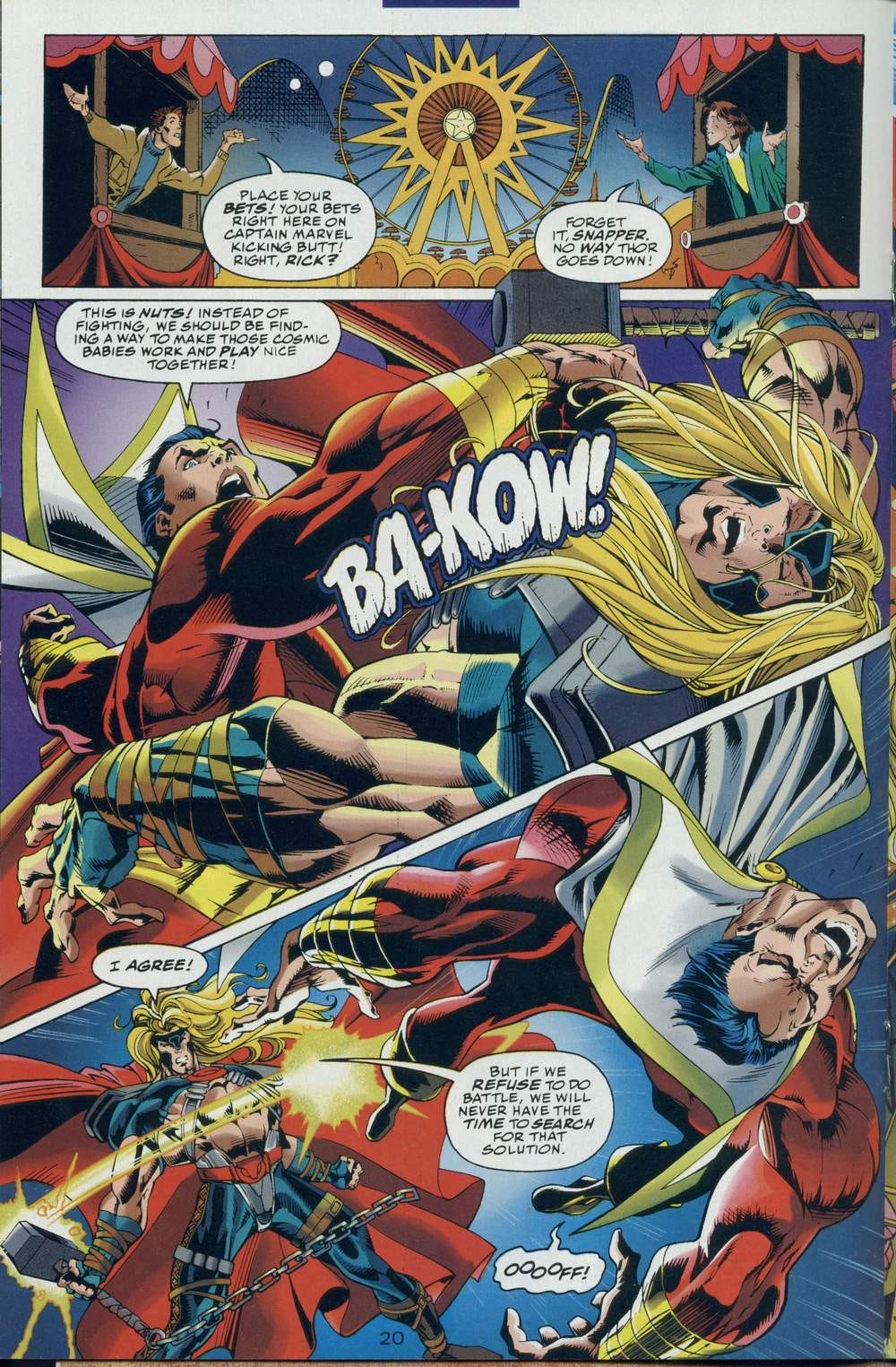
Thor (wearing his most ridiculous costume of all time) defeats Captain Marvel (Shazam) to get things started. That’s followed by Flash taking out Quicksilver. No complaints from me so far. That’s how I would expect both fights to go. The issue ends with Aquaman defeating Namor, and now I have to call bullshit. Namor would whoop Aquaman’s ass, and we all know it. Oh well. We also get a fun fight happening in the periphery between Thanos and Darkseid. I’d honestly read a four issue miniseries devoted exclusively to those two sickos.
The third issue keeps the fights coming. Robin (Tim Drake) subdues Jubilee, Silver Surfer takes out Green Lantern (Kyle Rayner), and Elektra dispatches Catwoman. No issues with any of these outcomes. Next up is the first of the marquee battles that were determined by fan voting: Wolverine vs. Lobo. This one is an obvious mismatch in two ways. Lobo is way out of Wolverine’s weight class when it comes to powers (Wolverine doesn’t even have his adamantium claws and skeleton at this point), but Wolverine in the 1990s was the most popular comic book character on the planet for folks who were actually reading comics at that time. There was no way Wolverine was going to lose that vote, and he didn’t. Down goes Lobo. The next fight was also decided by voters: Storm vs. Wonder Woman. I don’t know who would win a vote if it happened today, but there were far more X-Men fans in the 1990s than Wonder Woman fans. Storm notches the win.
After that, we get Spider-Man vs. Superboy. Come on. You know which character is more popular even if it’s Ben Reilly instead of Peter Parker. Spider-Man wins despite the power imbalance. If you’re keeping score at home, Marvel is now up 6-3. We knew going in that there would be a total of eleven fights, so this contest is already over. Marvel wins regardless of the outcome of the last two fights. You’d think the story would be staggered in a way so that the last fight would determine the winner, but that is not the case. Bizarre. Anyway, Superman defeats Hulk and Batman defeats Captain America to close things out. No surprises there considering how popular Superman and Batman are. Captain America in particular was not terribly popular in the 1990s. I once again digress. The important thing to note is that DC now must cease to exist according to the rules established at the beginning of the series. Sorry if you’re a fan of any of those characters. They’re gone forever now.
Thanks for reading. Next week I’ll be covering—wait a second. I’m being told that DC did not actually cease to exist prior to the fourth issue of this series being published. Apparently the issue concludes with the two universes (and thus all of their characters) merging together like some kind of…
Amalgam
This was probably the most fun (and surprising) development to come out of this crossover. The two publishers decided to momentarily merge into a fictional publishing company called Amalgam Comics, and they began publishing comics that fused their characters together. Some of these comics included Legends of the Dark Claw (a fusion of Batman and Wolverine) from Larry Hama and Jim Balent, Spider-Boy (Spider-Man and Superboy) by Karl Kesel and Mike Wieringo), JLX (Justice League and X-Men) by Mark Waid, Gerard Jones, and Howard Porter, Super-Soldier (Superman and Captain America) by Mark Waid said Dave Gibbons, and Magneto and the Magnetic Men (Magneto/Will Magnus and the Metal Men/Brotherhood of Mutants) among others.
Part of the gimmick was pretending that these were established characters with decades of continuity. There are references to fictional comic books from the past, and there are even letters pages at the backs of the issues with “fans” writing in and discussing comics that never actually existed. It’s pretty clever.
The final issue of the event is just a wrap up issue. The universes (and the characters) are separated once more. The heroes fight Thanos and Darkseid for a bit, but that’s interrupted when the sky begins raining blood like a Slayer song.
Turns out the brother gods are sword fighting, so all of reality is at stake. Bummer. Fortunately, a new character created just for this event named Access who is co-owned by both publishers steps in to convince them to stop fighting. Gotta love a happy ending.
So what should we make of this titanic crossing from almost thirty years ago? At the very least, it’s a great little snapshot of what the comic book industry was like at this time. You get a very clear picture of what characters were most popular, the types of stories currently being told, and just how freaked out those working in the industry were by the state of things. Did the crossover succeed in saving the industry? No. The final issue was released in May, and Marvel had filed for bankruptcy by December. The industry has since recovered, but sales have never come close to the levels seen in the early-1990s.
The two companies would team up for additional crossovers throughout the 1990s with the final one being JLA/Avengers by Kurt Busiek and George Perez published from September 2003 to March 2004.
I will be very curious to see what these new crossover issues will look like. Who will write and illustrate them? What characters will be used? Will there be more issues in the future? It’ll be interesting to see what path these companies take and how much they will harken back to how things were handled back in 1996.



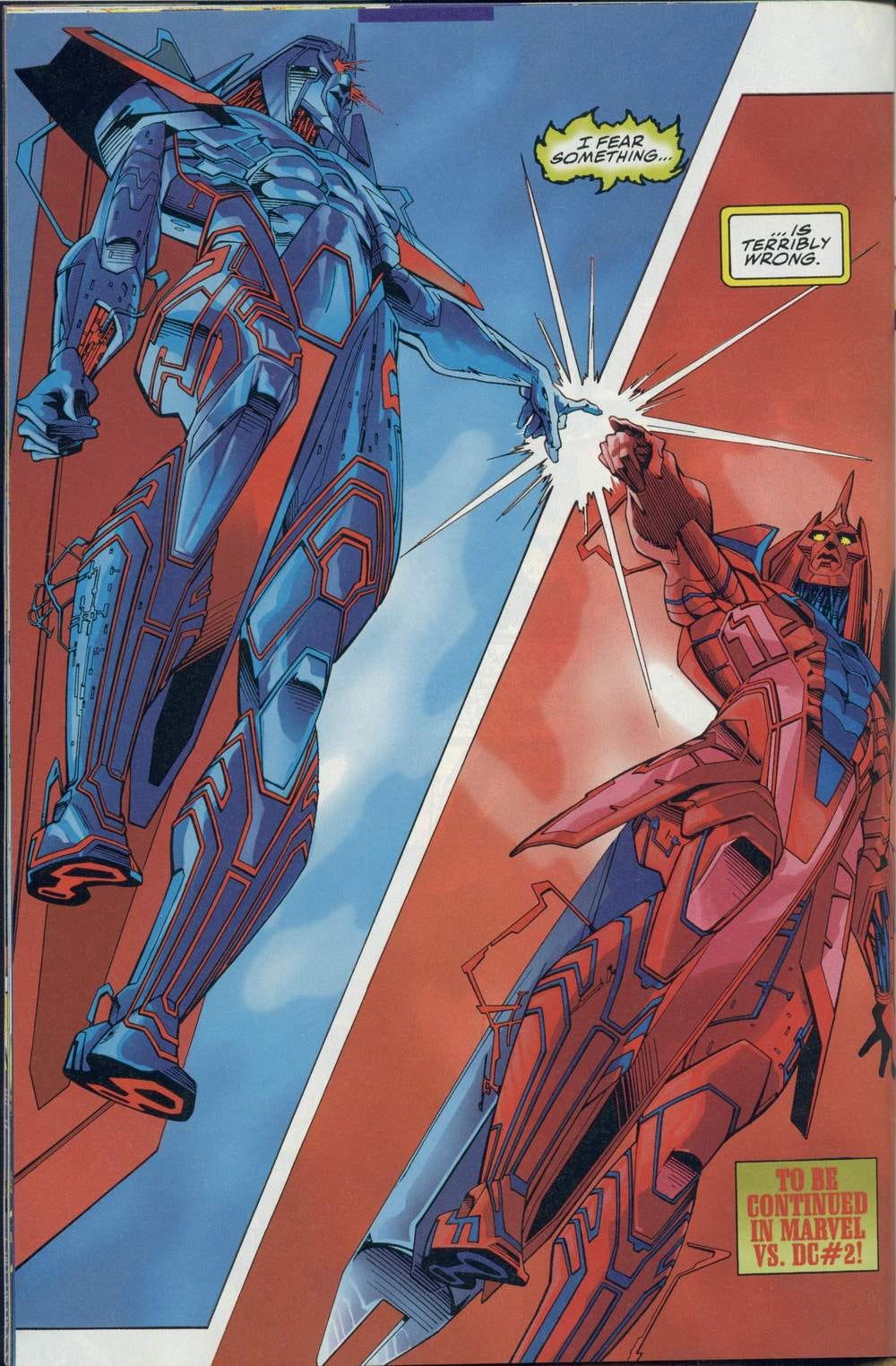
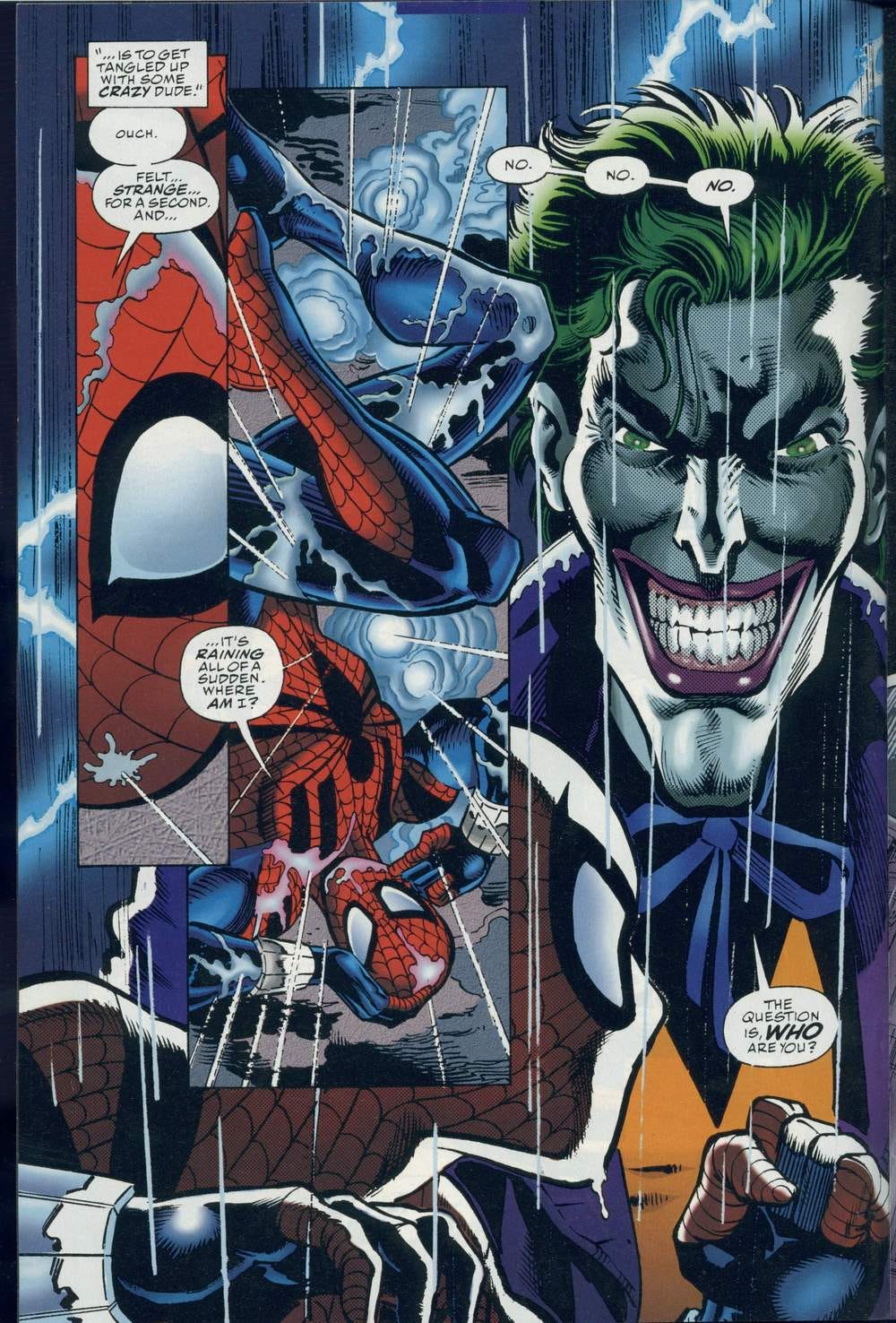
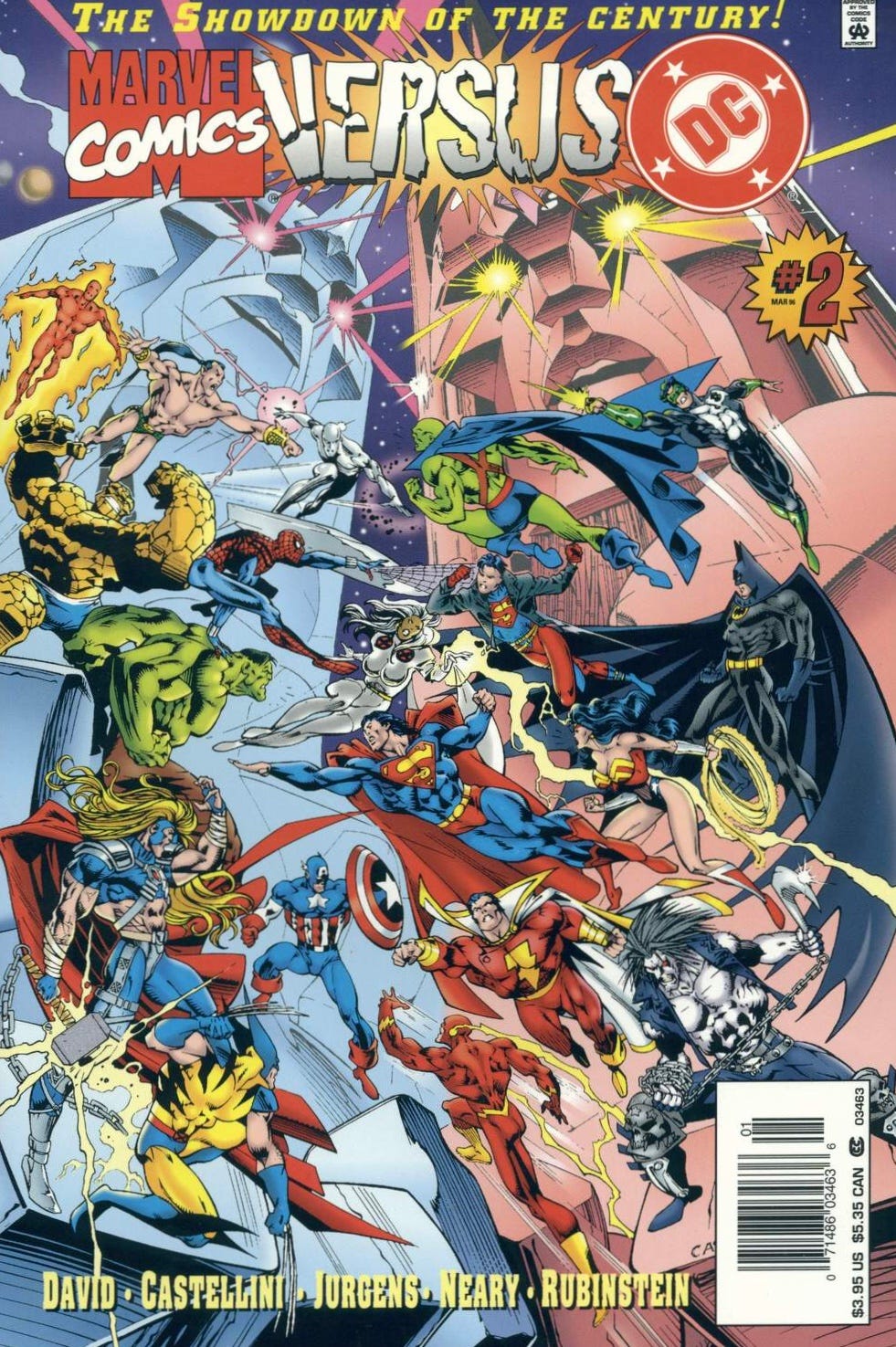
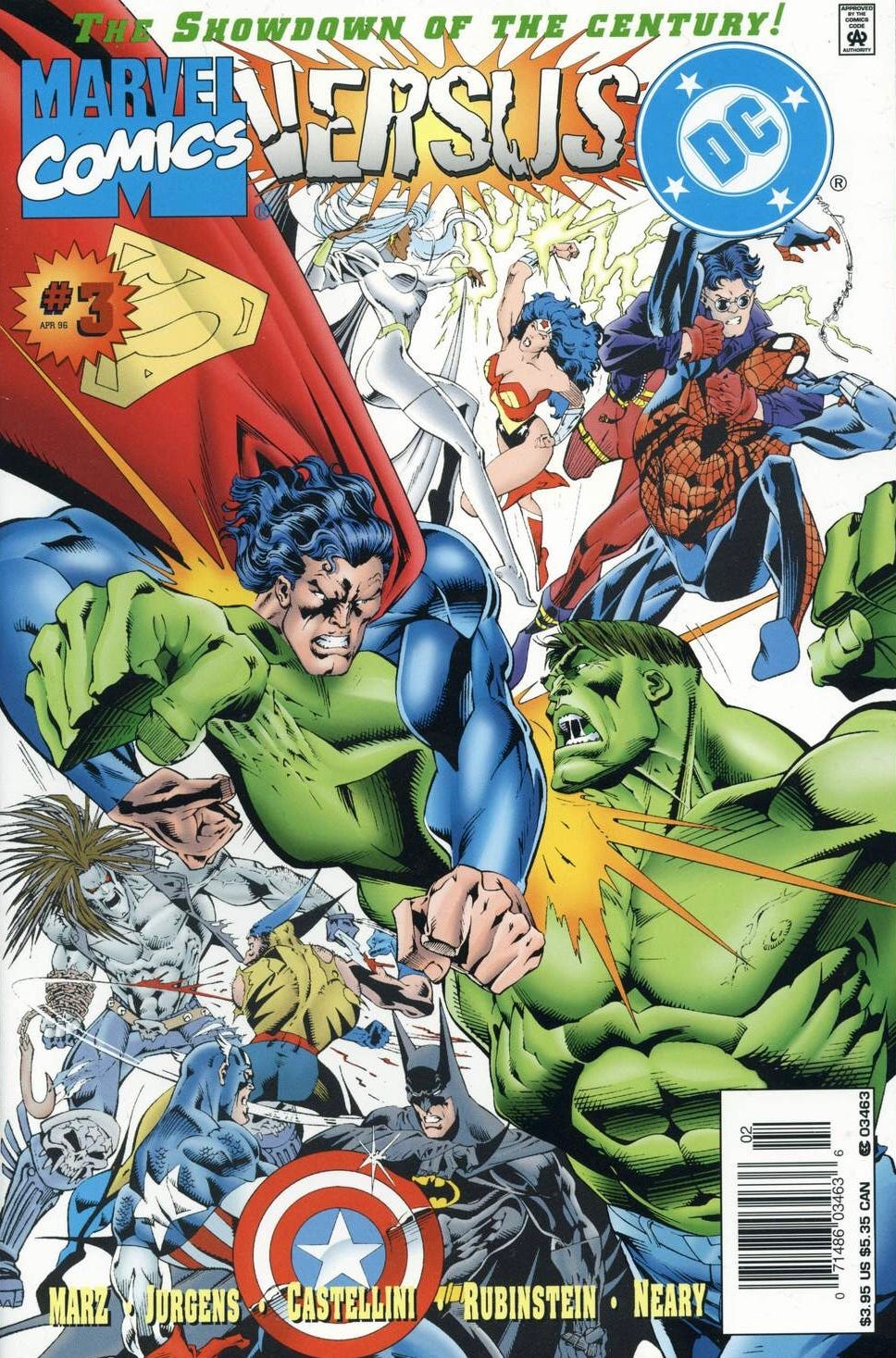
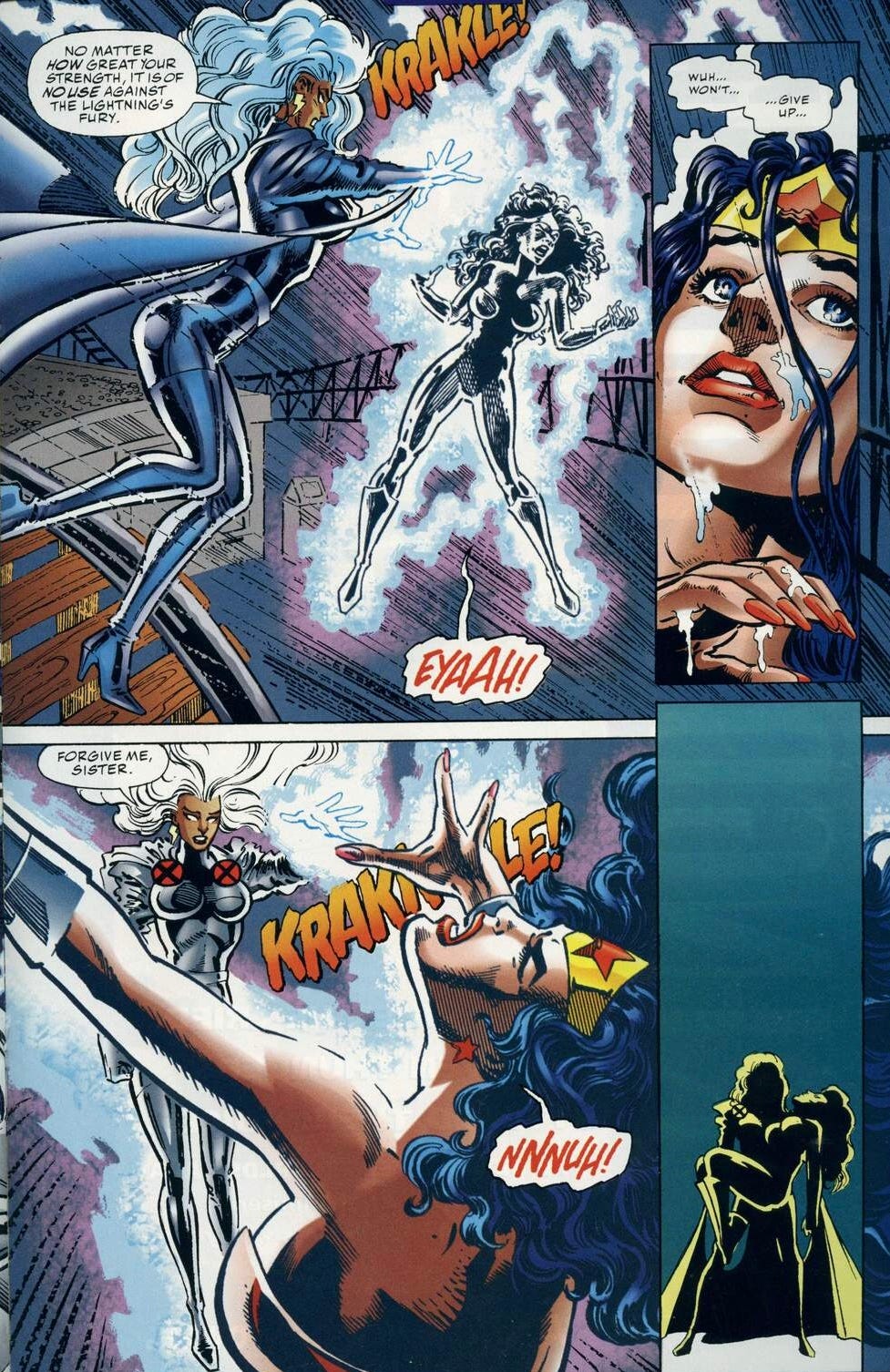
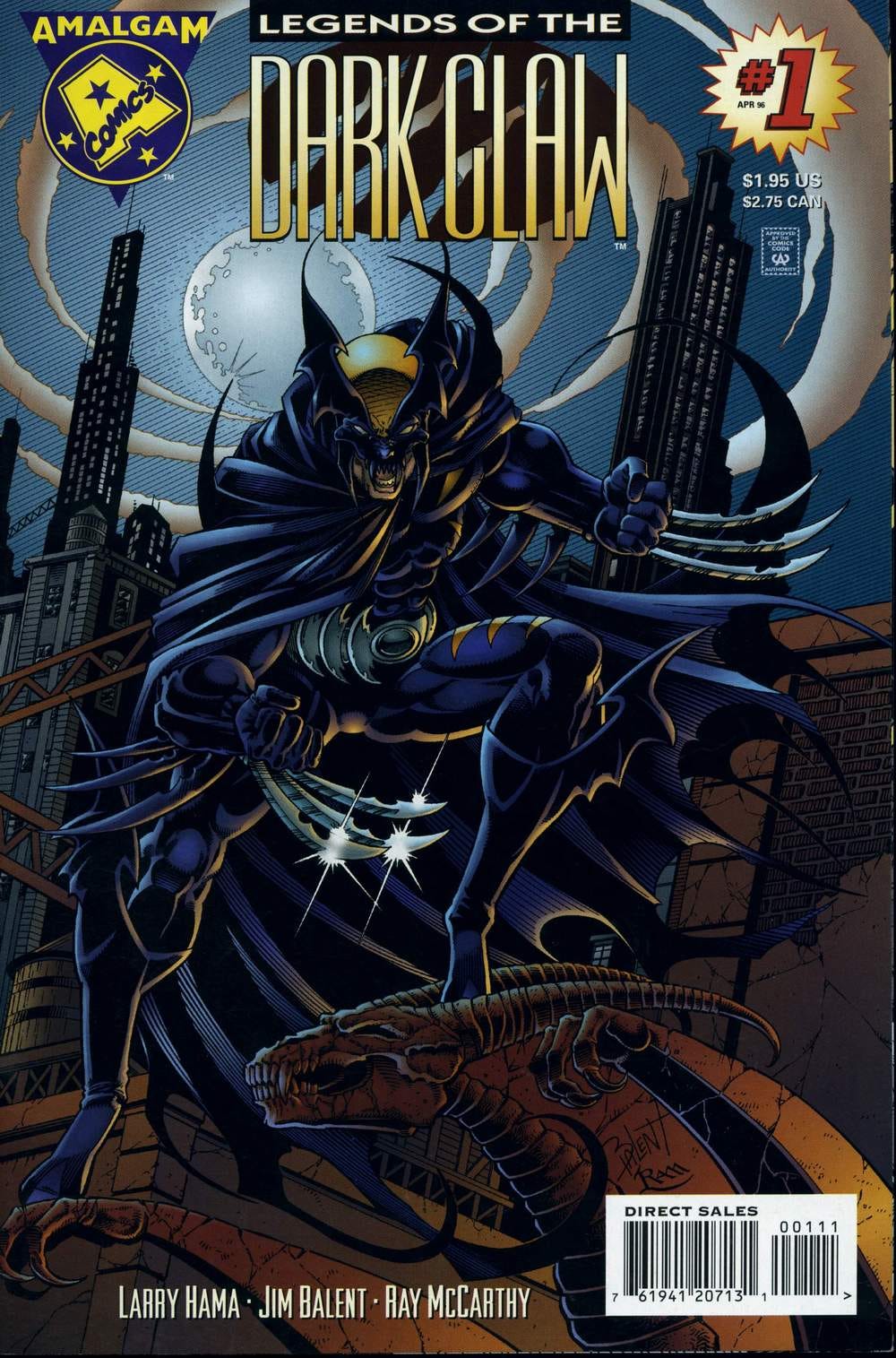
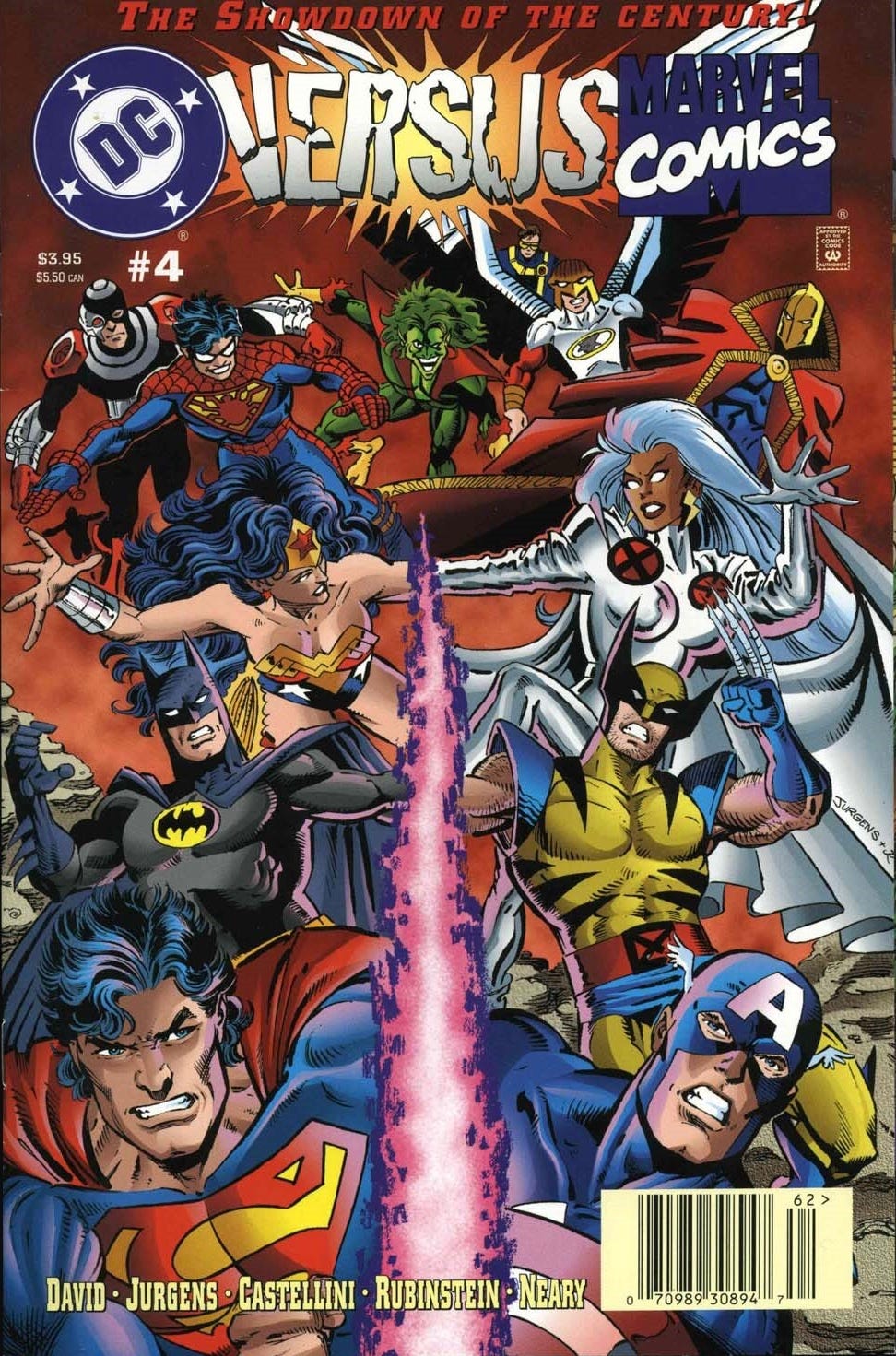
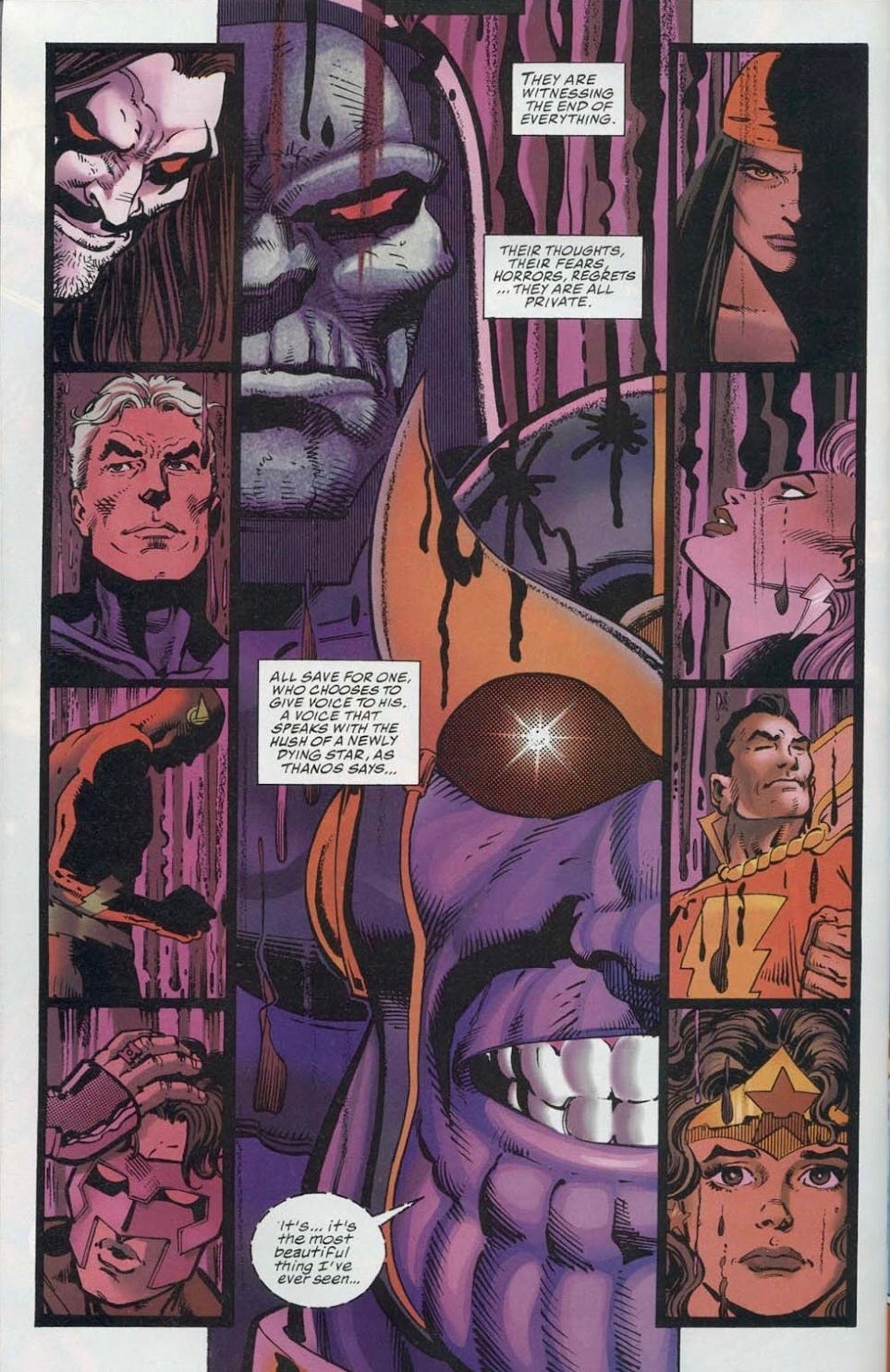
I love how the crossovers are very much "of the time" they were published, until the JLA vs Avengers story, which is timeless.
Superman vs Spider-Man is an all-time classic, but look at Titans vs X-Men, when both were at the heights of their powers. Just an absolute joy.
Personal favourite would be... the second Punisher vs Batman, for the fight in the rain at the end. I'm a big fan of the John Byrne Generations timeline, so his Batman and Captain America tie-in to that is everything I need. Thinking about it from an inspirational standpoint, the layers upon layers of continuity that Byrne builds into Generations played a role in my own creative process, but not his penchant for adults kissing children. AN-Y-WAY